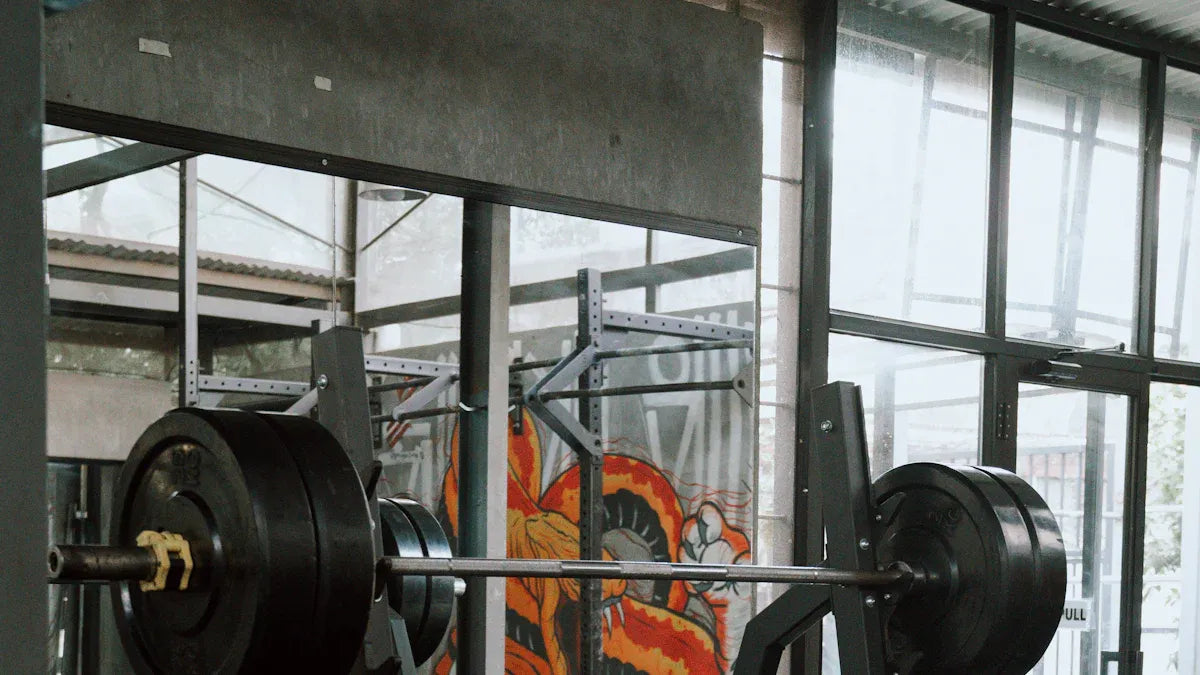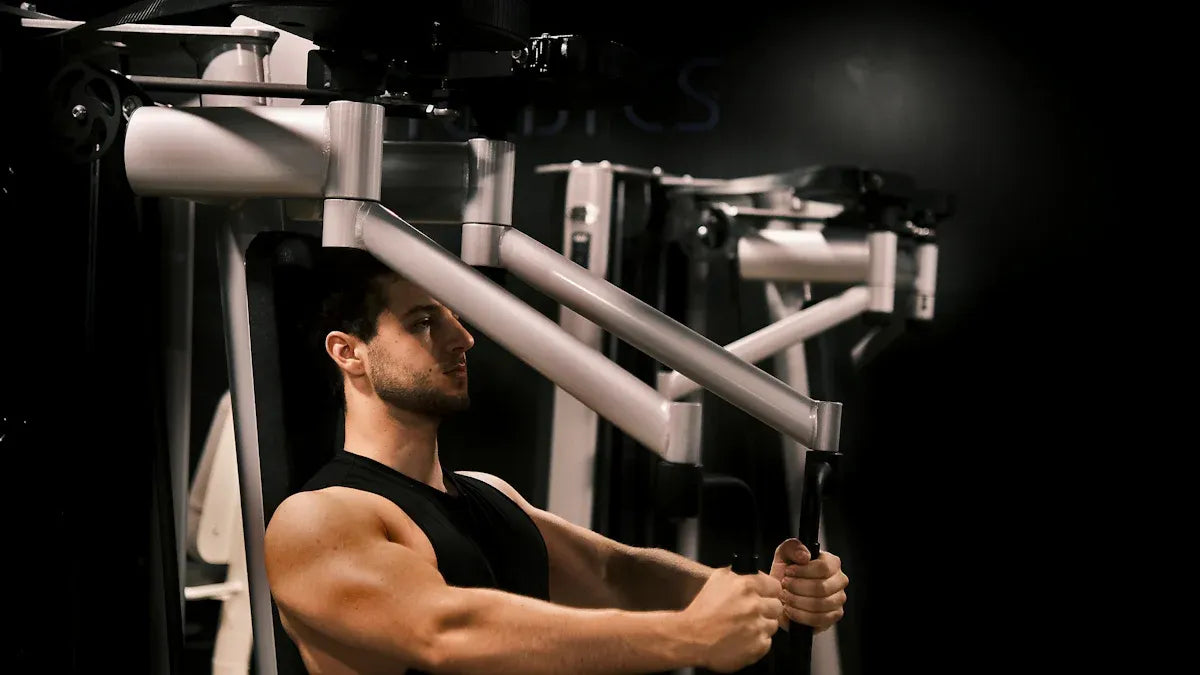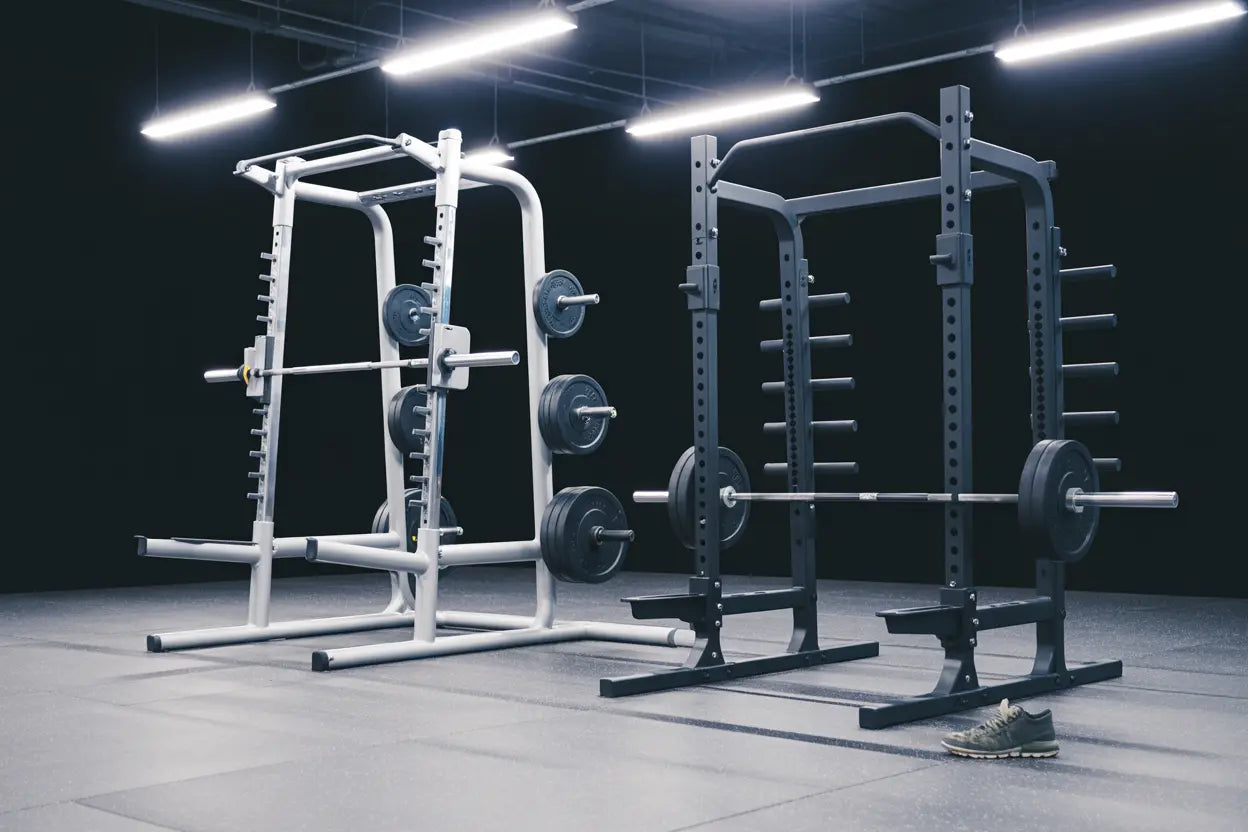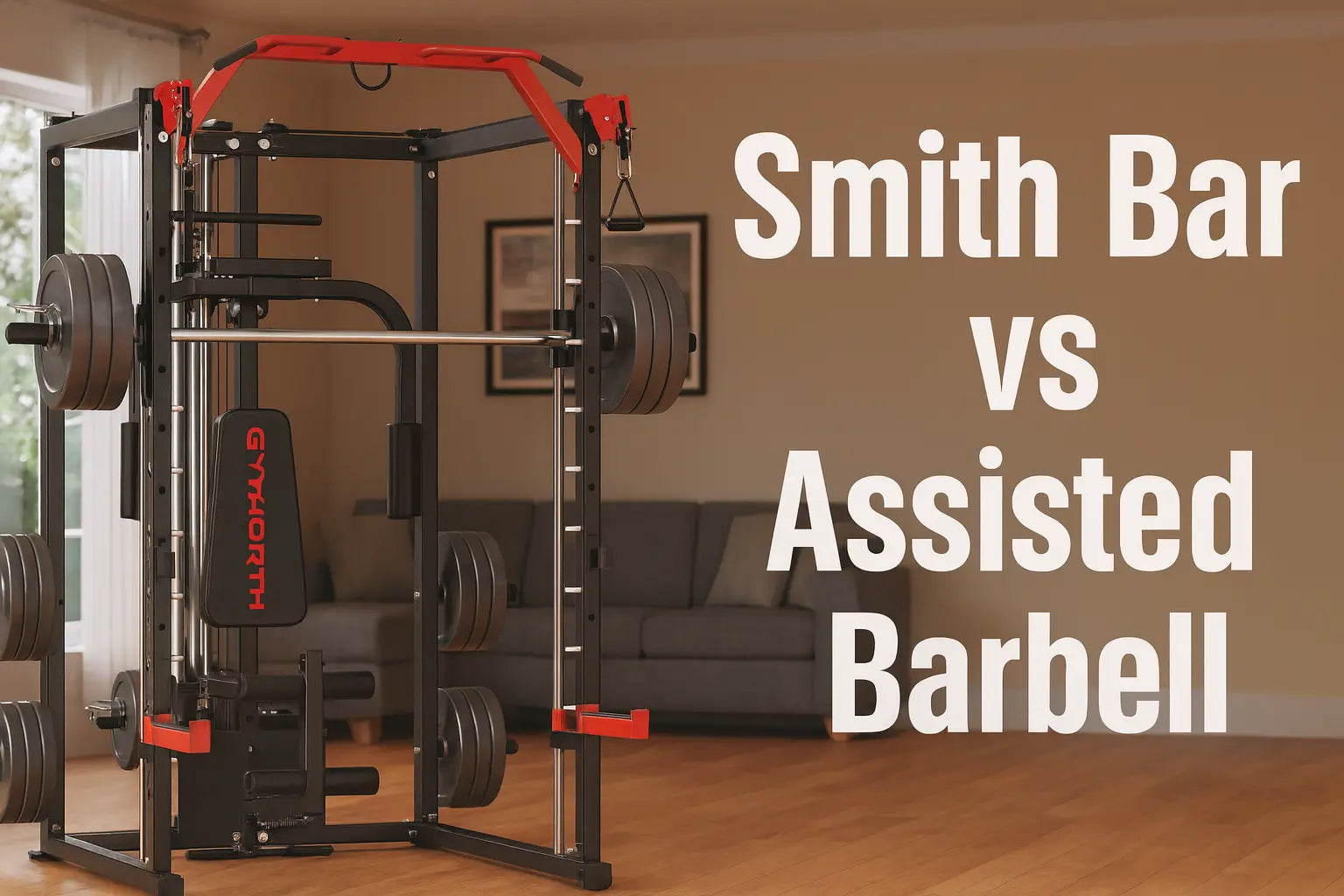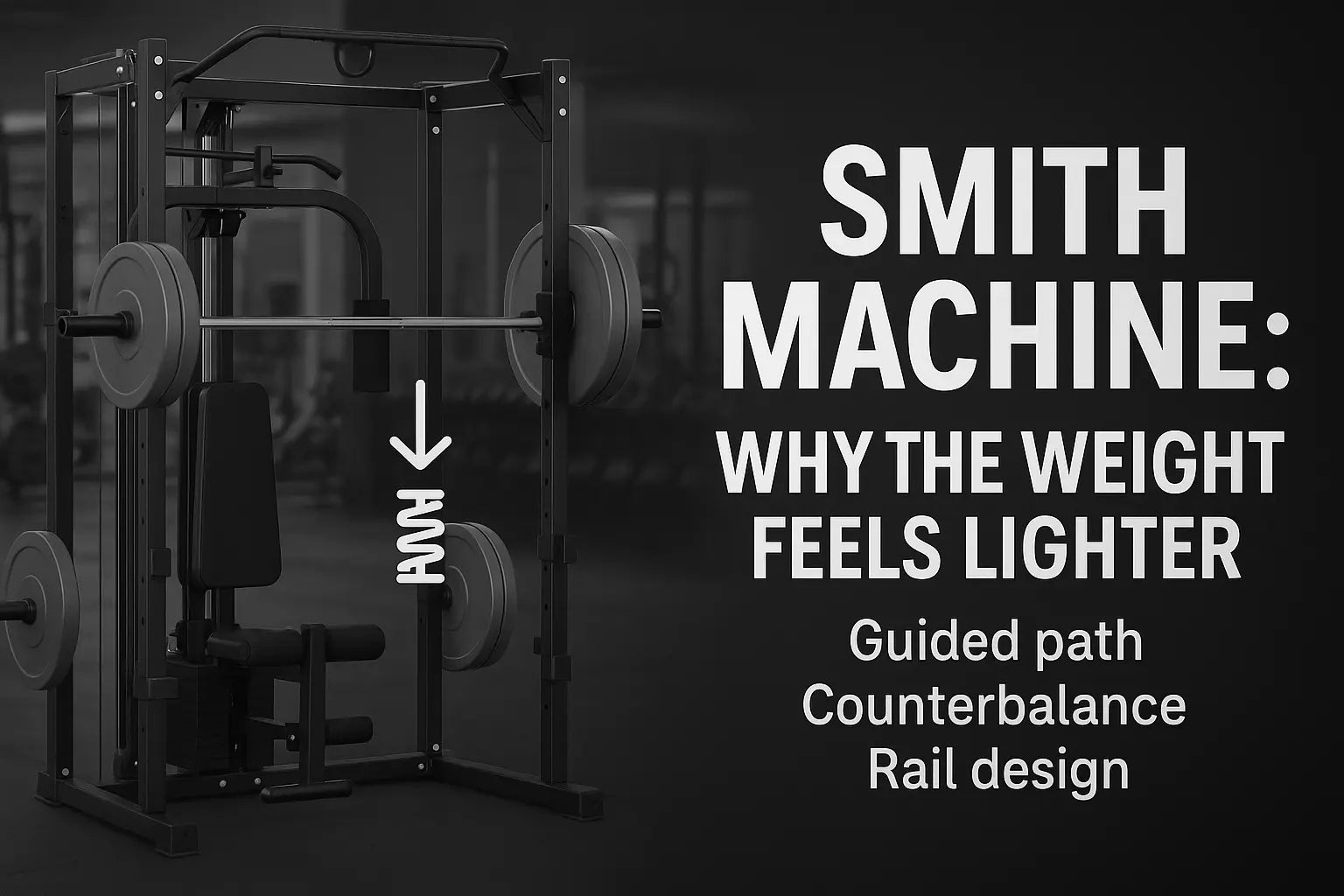
Choosing the right equipment can change your workout. If you want more safety and support, you might like the smith machine. It guides your movement and helps you feel secure, especially if you lift alone. If you want more freedom and natural motion, the squat rack lets you move your body the way you want. Think about your goals, your experience, and what feels best for you. Each option gives you something different.
Key Takeaways
-
The smith machine is very safe and gives good support. It is great for beginners or people who lift by themselves. The squat rack lets you do more types of exercises. It also helps your muscles work better. Using a squat rack can help you get stronger. It makes your small muscles work and lets your body move naturally. Think about your workout goals and how much experience you have. This will help you pick the best choice between the smith machine and squat rack. Always make sure you are safe. Check the equipment before you use it. Use the right form, especially with heavy weights.
Smith Machine vs Squat Rack
Let’s break down how the smith machine and squat rack compare. You want to know which one fits your needs, right? Here’s a quick table to help you see the main differences:
|
Feature |
Smith Machine |
Squat Rack |
|---|---|---|
|
Safety |
High, with built-in safety features and fixed path |
Depends on user skill and spotter, fewer safety features |
|
Versatility |
Limited to fixed bar path exercises |
Wide range of exercises, more freedom of movement |
|
Muscle Activation |
Lower for some muscles, more isolated |
Higher, engages more stabilizer muscles |
|
Ease of Use |
Simple for beginners, easy to set up |
Requires more skill and balance |
Safety
You want to feel safe when you lift. The smith machine gives you a lot of support. It has built-in safety features like safety stops and hooks. These help you avoid accidents if you get tired or lose control. The bar moves on a fixed track, so you don’t have to worry about balancing it. This makes the smith machine a good choice if you’re new to lifting or if you train alone.
The squat rack works differently. You have to balance the bar yourself. This means you need to focus on your form and control. The squat rack usually has fewer safety features, so you need to pay attention. If you use a squat rack, you might want a spotter or safety bars for extra protection. You get more freedom, but you also take on more responsibility for your own safety.
Tip: If you’re worried about safety, start with the smith machine. As you get stronger and more confident, you can try the squat rack.
Versatility
You might want to do more than just squats. The squat rack lets you try many exercises. You can do bench presses, overhead presses, and even special moves like lat pulls and hip lifts. These exercises are not possible on a smith machine because the bar can’t move freely. The squat rack gives you more options and lets you train your whole body.
The smith machine is more limited. You can do squats, presses, and lunges, but the bar always moves in the same straight line. This makes some exercises easier, but you can’t do everything you could with a squat rack. If you want to mix up your workouts and try new things, the squat rack gives you more choices.
-
Exercises you can do on a squat rack but not on a smith machine:
-
Lat pulls
-
Hip lifts
-
Muscle Activation
You want your muscles to work hard. The squat rack helps you use more muscles at once. When you squat with a free bar, your legs, glutes, and core all have to work together. Studies show that free weight squats activate your quadriceps, hamstrings, and glutes more than the smith machine. Your calves and other stabilizer muscles also work harder. This means you build more strength and muscle with the squat rack.
The smith machine targets your main muscles, but it doesn’t make your stabilizers work as much. The fixed path helps you focus on form, but your body doesn’t have to balance the weight. You still get a good workout, but you might not see the same muscle gains as you would with a squat rack.
|
Muscle Group |
Free Weight Squats |
Smith Machine Squats |
|---|---|---|
|
Quadriceps |
Higher activation |
Lower activation |
|
Gluteus |
Higher activation |
Lower activation |
|
Hamstrings |
Higher activation |
Lower activation |
|
Gastrocnemius |
Increased by 34% |
Not specified |
|
Biceps Femoris |
Increased by 26% |
Not specified |
|
Vastus Lateralis |
Increased by 49% |
Not specified |
Ease of Use
You want your workout to feel smooth. The smith machine is easy to use. You set the bar, pick your weight, and start lifting. The bar stays on its track, so you don’t have to worry about balance. This makes the smith machine perfect for beginners or anyone who wants a simple setup.
The squat rack takes more practice. You have to set the bar, balance it, and control your movement. This can feel tricky at first, but you get better with time. The squat rack helps you learn good form and build real-world strength. If you want a challenge and don’t mind learning, the squat rack is a great choice.
Note: Both the smith machine and squat rack can help you reach your goals. Think about what matters most to you—safety features, versatility, muscle activation, or ease of use.
Workout Goals
Muscle Building
If you want to build muscle, you need to pick the right tool. The squat rack helps you work many muscles at once. When you use a squat rack, your quads, glutes, and adductors all get stronger. You also use your lower back and spinal erectors to keep your body steady. This makes the squat rack a top choice for muscle growth.
-
Free-weight squats with a squat rack:
-
Build your quads, glutes, and adductors.
-
Engage stabilizing muscles like your lower back.
-
Follow your body’s natural movement, which can help your joints.
-
The smith machine can help you focus on your quads. It keeps the bar in a straight line, so you do not have to balance as much. But this can mean you use fewer stabilizer muscles. Over time, you might not see as much total muscle growth as you would with a squat rack. The smith machine may also change how your joints feel during the lift.
Tip: If you want to grow all your leg muscles and get stronger everywhere, the squat rack gives you more benefits.
Strength
Getting stronger means using your whole body. The squat rack lets you lift heavy weights with a free bar. You have to balance the bar and use your legs, core, and back together. Studies show that muscle activation is much higher when you use a squat rack. Your calves, hamstrings, and quads all work harder. You can see up to 43% more muscle recruitment with a squat rack than with a smith machine.
-
Barbell squats in a squat rack:
-
Increase muscle activation by 40% compared to smith machine squats.
-
Recruit your calves, hamstrings, and quads much more.
-
Help you build real-world strength and coordination.
-
The smith machine can help you lift safely, but it does not make your stabilizer muscles work as hard. You might not get as strong overall. If you want to see big gains in strength, the squat rack is the better pick.
Beginners
Starting out can feel scary. The smith machine makes things easier for you. It holds the bar in place, so you do not have to worry about balance. You can focus on learning the right form. The smith machine also has safety stops, which help you feel safe if you are lifting alone.
The squat rack takes more practice. You have to balance the bar and use good form. This can be tough at first, but it teaches you how to move your body the right way. Many trainers suggest starting with the squat rack if you can, because it helps you learn balance and stability from the start.
-
Free-weight squats with a squat rack:
-
Teach you balance and stability.
-
Help you use more muscles.
-
Match your body’s natural movement.
-
-
Smith machine squats:
-
Make it easier to learn the basic movement.
-
Offer more safety for solo workouts.
-
Note: If you feel nervous, try the smith machine first. When you feel ready, move to the squat rack for better results.
Injury Prevention
Staying safe matters. The smith machine looks safe because it keeps the bar on a fixed path. But this can sometimes cause problems. If your body does not move in the same way as the bar, you might use poor form. Over time, this can lead to injuries, especially in your back or knees. Some people develop bad habits on the smith machine because they do not have to balance the weight.
The squat rack lets your body move in a natural way. You have to use your muscles to keep the bar steady. This can help you avoid injuries, as long as you use good form and do not lift too much weight. If you are new, ask someone to watch your form or use safety bars.
Remember: The smith machine can help you feel safe, but the squat rack helps you move safely if you learn the right way.
Functional Fitness
Functional fitness means training for real life. You want to move better, not just look strong. The squat rack is great for this. You can do squats, presses, and deadlifts that match how you move every day. These exercises use many muscles at once and help you get better at things like lifting, jumping, and running.
The smith machine does not let you move as freely. The fixed bar path means you do not use your stabilizer muscles as much. You might get stronger in one way, but you will not build the same kind of real-world strength.
-
Squat rack exercises:
-
Copy real-life movements.
-
Build balance, coordination, and strength.
-
Help you get better at sports and daily tasks.
-
-
Smith machine exercises:
-
Focus on single muscles.
-
Do not train your body for natural movement.
-
If you want to move better in life and sports, the squat rack is your best friend.
Smith Machine Pros and Cons
Smith Machine Pros
You might love the smith machine for its safety and support. Many people choose it because it helps you feel confident, even if you work out alone. Here’s a quick look at what makes the smith machine stand out:
|
Advantage |
Description |
|---|---|
|
Enhanced Safety Features |
The smith machine guides your movement, so you avoid injuries and keep good form. |
|
Increased Stability |
You get more stability, which helps you focus on your technique and core strength. |
|
Better Range of Motion |
The smith machine lets you control your movements and target certain muscle groups. |
|
Safer for Beginners |
If you’re new, the smith machine gives you a safe place to learn and lowers your risk of injury. |
|
Versatility in Exercises |
You can try many exercises with the smith machine, so your workouts stay interesting. |
You can also set adjustable safety catches on the smith machine. These catches help you lift heavy weights without a spotter. If you fail a rep, the smith machine catches the bar for you. This feature gives you peace of mind and lets you focus on your form. The fixed path of the smith machine keeps the bar steady, which is great for compound moves like squats and presses. Many beginners use the smith machine to build confidence before moving to the squat rack.
Tip: If you want to lift alone or you’re just starting out, the smith machine can make your workouts safer and less stressful.
Smith Machine Cons
The smith machine does have some downsides. You might notice that the fixed bar path feels a bit unnatural. The smith machine restricts your body’s natural movement, which can lead to muscle imbalances over time. You don’t use your stabilizer muscles as much, so your core and smaller muscles might not get as strong. This can affect your balance and coordination.
Some people find that the smith machine limits their progress in functional strength. Since the bar only moves up and down, you don’t get the same muscle activation as you would with free weights or a squat rack. Over time, you might not see the same gains in real-world strength. The smith machine can also make you rely too much on its support, so you may not learn proper balance.
-
The smith machine restricts your natural range of motion.
-
You might develop muscle imbalances if you use it too often.
-
It does not engage your stabilizer muscles as much as free weights.
-
You may not build as much functional strength for sports or daily life.
Note: If you want to train for real-life movement or sports, you might want to use the smith machine less and try the squat rack more often.
Squat Rack Pros and Cons

Squat Rack Pros
You get a lot of benefits when you use a squat rack. This equipment gives you freedom to move in a natural way. You can do many exercises, not just squats. You can try bench presses, overhead presses, and even deadlifts. The squat rack lets you train your whole body and build real strength.
You also work more muscles at once. When you use a squat rack, your legs, core, and back all have to help. This makes your workouts more effective. You learn balance and control because you have to steady the bar yourself. Many athletes and coaches choose the squat rack for this reason.
Safety is another big plus. If you ever get stuck during a lift, you can drop the weights or roll the bar away. The squat rack gives you more ways to bail out safely. This is different from the smith machine, which can feel more rigid and even dangerous if you lose control. The squat rack design helps you avoid accidents and gives you confidence to push yourself.
Tip: If you want to train for sports, daily life, or just get stronger all over, the squat rack is a smart choice.
Squat Rack Cons
The squat rack does have some drawbacks you should know about. Here are the most common issues people report:
-
Takes up a lot of floor space in your home or gym.
-
Costs more upfront than things like dumbbells or resistance bands.
-
May need maintenance over time, especially if you use it a lot.
You also need to learn good form. The squat rack does not guide your movement, so you must pay attention to how you lift. If you do not use the right technique, you could hurt yourself. Some beginners feel nervous at first because the bar is not fixed in place. You might want a spotter or safety bars until you feel comfortable.
The squat rack gives you more freedom, but that means you have to take more responsibility for your safety. Always check your setup before you start lifting. Make sure the safety bars are at the right height and the area around you is clear.
|
Drawback |
Description |
|---|---|
|
Space |
Needs a big area to set up and use safely |
|
Cost |
Higher price than smaller equipment |
|
Maintenance |
May require repairs or checks over time |
Note: If you have limited space or a tight budget, you might want to think about these points before choosing a squat rack.
Practical Tips
Space
You want your workout area to feel comfortable. The smith machine takes up less space than a squat rack. If you have a small home gym, you might find the smith machine fits better. The squat rack needs more room because you move the bar in different directions. You also need space for weights and safe movement. Measure your area before you buy anything. Make sure you can walk around the squat rack or smith machine without bumping into things.
Budget
Money matters when you pick equipment. The squat rack usually costs more than the smith machine. You pay extra for features like adjustable safety bars and sturdy frames. The smith machine can be cheaper, especially if you choose a basic model. Think about your long-term goals. If you want to do many exercises, the squat rack gives you more value. If you just want a safe place to start, the smith machine saves you money.
|
Equipment |
Average Price Range |
|---|---|
|
Smith Machine |
$400 - $1,200 |
|
Squat Rack |
$500 - $2,000 |
Availability
You might notice that gyms offer both options. Some gyms have several squat racks and at least one smith machine. If you work out at home, you need to check what fits your space and budget. The squat rack is popular for group workouts and strength training. The smith machine is easy to find in most gyms because it helps beginners feel safe. Ask your gym staff which equipment gets used most. Try both if you can.
Safety Tips
Safety should always come first. When you use the smith machine, set the safety stops before you start. This helps you avoid accidents if you get tired. With the squat rack, always check the safety bars and make sure they are at the right height. Never lift more weight than you can handle. If you feel unsure, ask for a spotter. Warm up before you use either the smith machine or squat rack. Good form keeps you safe and helps you reach your goals.
Tip: Start with lighter weights until you feel confident. Practice your form with both the smith machine and squat rack to avoid injuries.
You’ve learned how the smith machine gives you safety, support, and an easy way to start lifting. If you want to focus on form or train alone, the smith machine helps you feel confident. You can use the smith machine for muscle building, injury prevention, and learning new moves. The squat rack lets you move naturally and build real-world strength. Try both if you can.
Remember, your workout goals matter most. Pick the smith machine or squat rack that fits you best and keep pushing forward!
FAQ
Can you build muscle with both the smith machine and squat rack?
Yes, you can build muscle with both. The squat rack lets you use more muscles at once. The smith machine helps you focus on form and safety. Choose the one that matches your comfort and goals.
Which is safer for beginners?
The smith machine feels safer for most beginners. It guides your movement and has safety stops. You can learn the basics without worrying about balance. When you feel ready, try the squat rack for more freedom.
Do you need a spotter when using a squat rack?
A spotter helps you stay safe, especially when lifting heavy. If you do not have a spotter, set the safety bars at the right height. Always check your setup before you start your set.
What are the main differences between the smith machine and squat rack?
The smith machine uses a fixed bar path and built-in safety features. The squat rack gives you more freedom and works more stabilizer muscles. If you want more details, check out the faqs on squat rack vs smith machine for extra tips.
Vanswe’s Top Picks
Latest Articles


